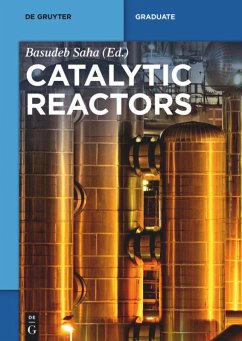
Kinetics of Catalytic Reactions
Versandkostenfrei!
Versandfertig in 6-10 Tagen
49,99 €
inkl. MwSt.
Weitere Ausgaben:

PAYBACK Punkte
25 °P sammeln!
Heterogeneous catalysis has shaped our past and will shape our future. Already involved in a trillion dollar's worth of gross domestic product, catalysis holds the key to near term impact areas such as improved chemical process efficiency, environmental remediation, development of new energy sources, and new materials. Furthermore, recent advances in understanding and computing chemical reactivity at the quantum level are opening new pathways that will accelerate the design of catalysts for specific functions. This enormous potential will ultimately be turned into reality in laboratory reactor...
Heterogeneous catalysis has shaped our past and will shape our future. Already involved in a trillion dollar's worth of gross domestic product, catalysis holds the key to near term impact areas such as improved chemical process efficiency, environmental remediation, development of new energy sources, and new materials. Furthermore, recent advances in understanding and computing chemical reactivity at the quantum level are opening new pathways that will accelerate the design of catalysts for specific functions. This enormous potential will ultimately be turned into reality in laboratory reactors and have its impact on society and the economy in the industrial reactors that lie at the heart of all chemical processes. Because the quanti- tive measure of catalyst performance is the reaction rate, its measurement is central to progress in catalysis. The pages that follow are a comprehensive guide to success for reaction rate measurements and analysis in catalytic systems. The topics chosen, the clarity of presentation, and the liberal use of specific examples illuminate the full slate of issues that must be mastered to produce reliable kinetic results. The unique combination of characterization techniques, thorough disc- sion of how to test for and eliminate heat and mass transfer artifacts, evaluation of and validity tests for rate parameters, and justification of the uniform surface approximation, along with the more standard ideal reactor analyses and development of rate expressions from sequences of elementary steps, will enrich readers from both science and engineering backgrounds.














